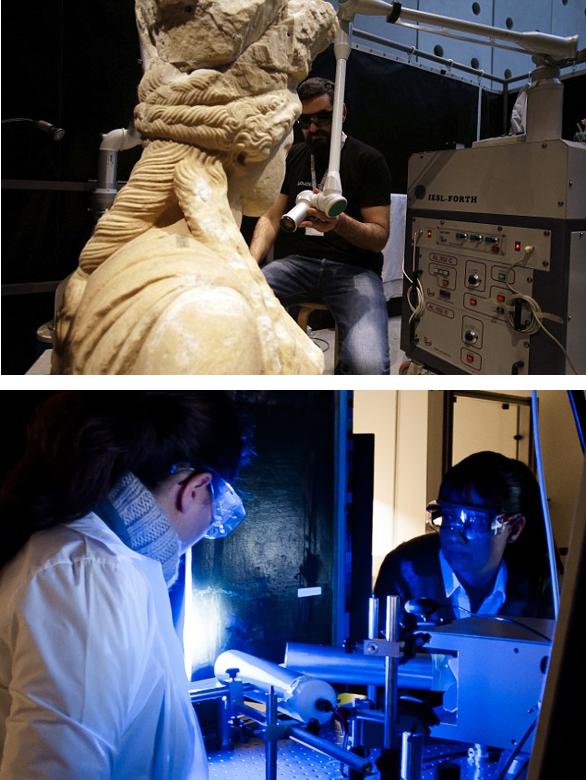IESL-FORTH holds a number of laser systems with different wavelength, pulse duration and energy output characteristics available for laser cleaning investigations such as:
- Transportable Q-switched Nd:YAG lasers (Quantel Q-smart 850, LITRON TRLi, Spectron SL-805 modified, Quanta Palladio, BMI 5022 DNS 10) emitting both nano- and pico-second (EKSPLA SL 312) laser pulses at various wavelengths (such as 1064, 532, 355, 266 & 213 nm)
- Various excimer lasers emitting nano, pico and femto-second pulses in the UV
- A patented transportable ns Nd:YAG system with dual-wavelength beam output, developed for the laser cleaning project of the Athens Acropolis Monuments especially dedicated to remove pollution crust from stonework without any discoloration or damage
- A transportable LQS Nd:YAG system (ElEn, EOS1000) emitting IR pulses at longer pulse-widths
- An Er:YAG laser system (LITRON NANO L 200-20-Er) emitting at 2094 nm
- A continuous CO2 laser system (Coherent Diamond C20) for the patented application related to the laser conservation of glazed objects.
Various workstations adaptable for different laser cleaning applications with the ability to integrate different optical and opto-mechanical components for the most appropriate beam delivery and control are available such as:
- Handheld units (using a articulated mirrored arm)
- Automated beam scanning units for micrometer control and guidance of the laser beam to the sample (i.e. the painting surface).
The latter, a computer-driven mechanized component, can be adjusted on the basis of fluence values, spot size and pulse repetition rate enabling thus the homogeneous scanning of predefined areas.
Furthermore, a number of multi-modal diagnostic instruments for in-situ assessment of the cleaning result and monitoring of the laser ablation procedure are also available. These can be selected according to the specifications of each individual cleaning case and may be one or more of the following:
- Spectral Imaging to visualise the cleaning state
- Laser-Induced Fluorescence (LIF) to evaluate the thinning of varnish
- Vis-NIR Diffuse Reflectance spectroscopy to chemically characterise the irradiated surfaces



